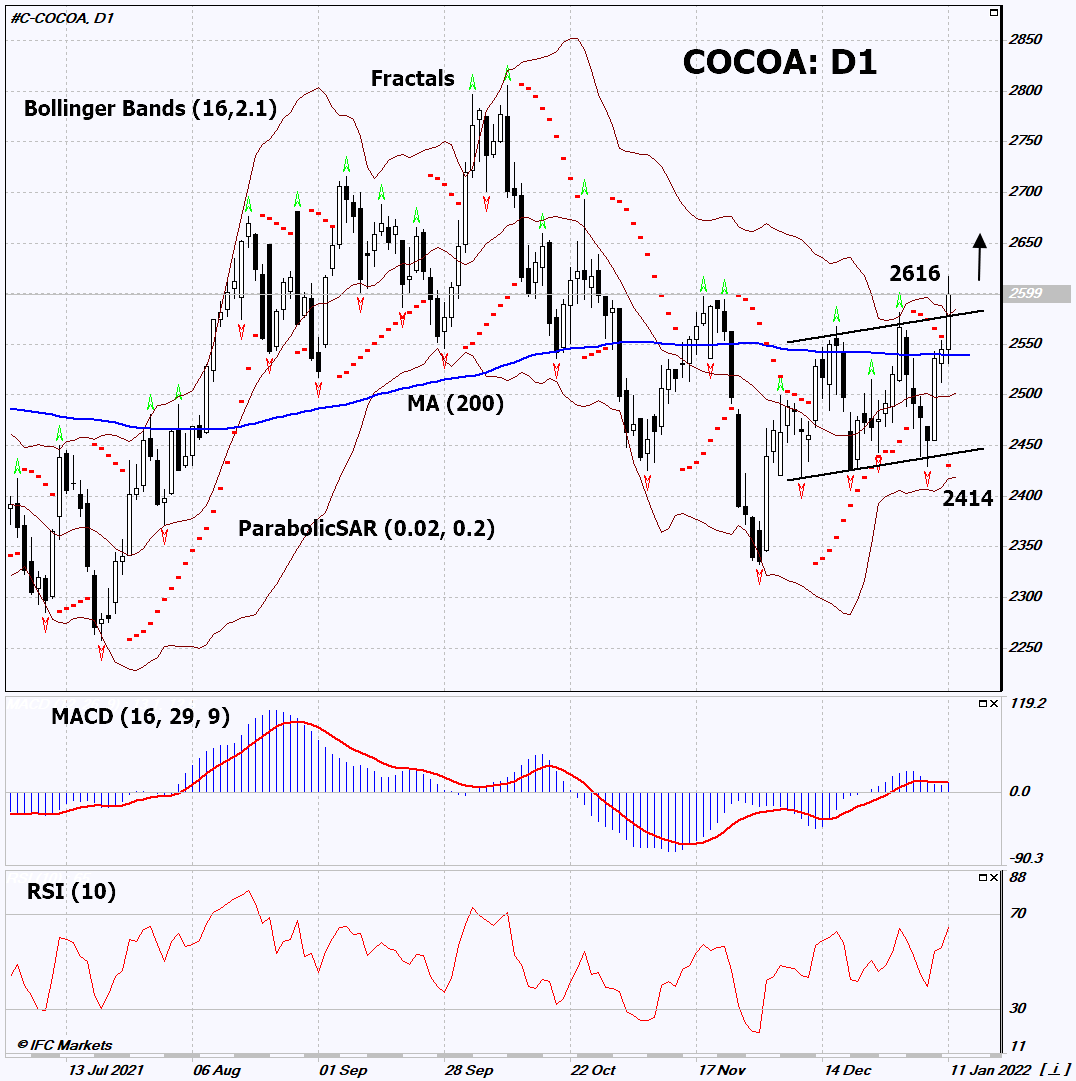Cocoa Technical Analysis Summary
Buy Stop: Above 2616
Stop Loss: Below 2414
| Indicator | Signal |
|---|---|
| RSI | Neutral |
| MACD | Neutral |
| MA(200) | Buy |
| Fractals | Buy |
| Parabolic SAR | Buy |
| Bollinger Bands | Buy |
Cocoa Chart Analysis
Cocoa Technical Analysis
On the daily timeframe, COCOA: D1 has moved higher from the short-term upward channel. A number of technical analysis indicators have formed signals for further growth. We do not rule out a bullish move if COCOA rises above the last high: 2616. This level can be used as an entry point. The initial risk limitation is possible below the 200-day moving average line, Parabolic signal, last lower fractal, 10-month low and lower Bollinger line: 2414. After opening a pending order, move the stop following the Bollinger and Parabolic signals to the next fractal low. Thus, we change the potential profit/loss ratio in our favor. The most cautious traders, after making a deal, can go to the four-hour chart and set a stop-loss, moving it in the direction of movement. If the price overcomes the stop level (2414) without activating the order (2616), it is recommended to delete the order: there are internal changes in the market that were not taken into account.
Fundamental Analysis of Commodities - Cocoa
Drought risks in West Africa could drive up agricultural prices. Will the COCOA quotes rise?
Hot weather can be caused by the Harmattan trade winds. It is formed from late November to early March. West Africa produces 77% of the world’s cocoa, so quotes are subject to weather conditions in the region. There are several other factors that can contribute to the rise in the price of cocoa. The government of the Ivory Coast announced a decrease in its shipments to ports from October 1, 2021 to January 2, 2022 by -5.9% to 1.11 million tons. This West African state accounts for 43% of the world’s cocoa production. The International Cocoa Organization raised its forecast for global cocoa production in the 2020/2021 agricultural season by 9.3% to 5.17 million tones and the processing of cocoa beans by 4.3%. As a result, the global surplus may decrease by 7.8% compared to the previous season to 212 thousand tons. The growth in the processing of cocoa beans and, as a result, global consumption may be caused by the mitigation of the coronavirus epidemic. It is believed that a significant portion of the chocolate is purchased while traveling.
